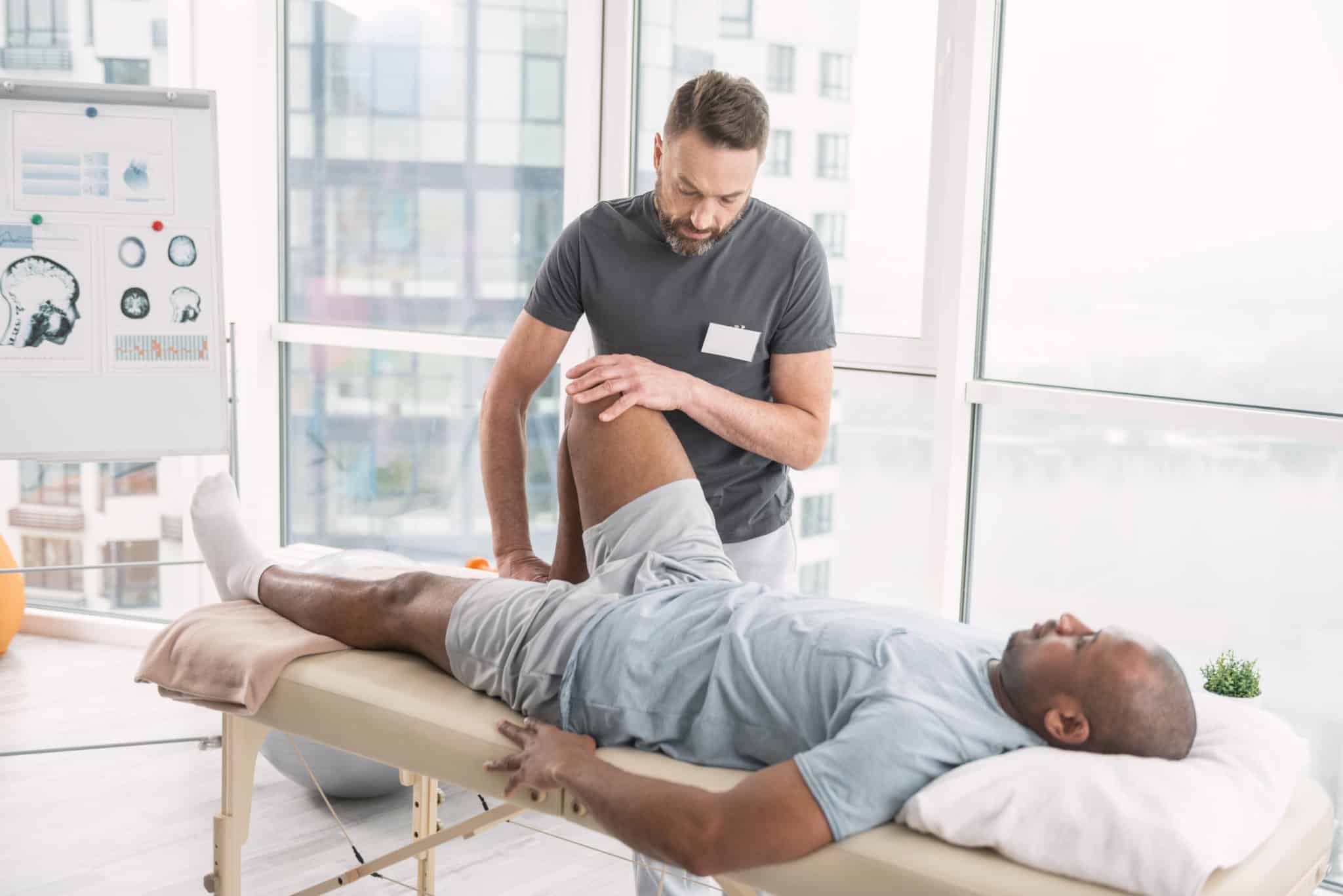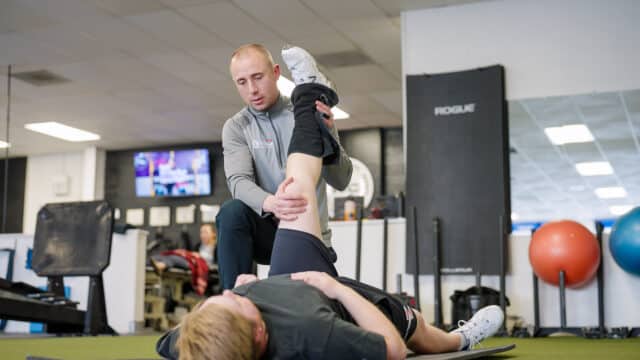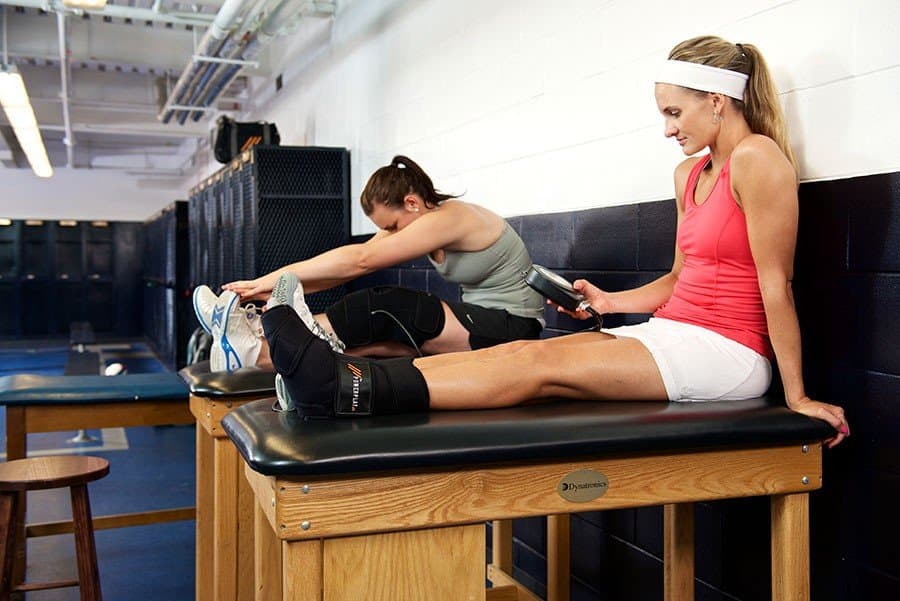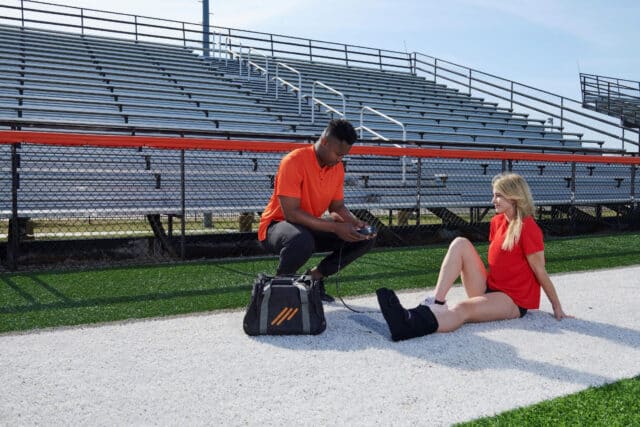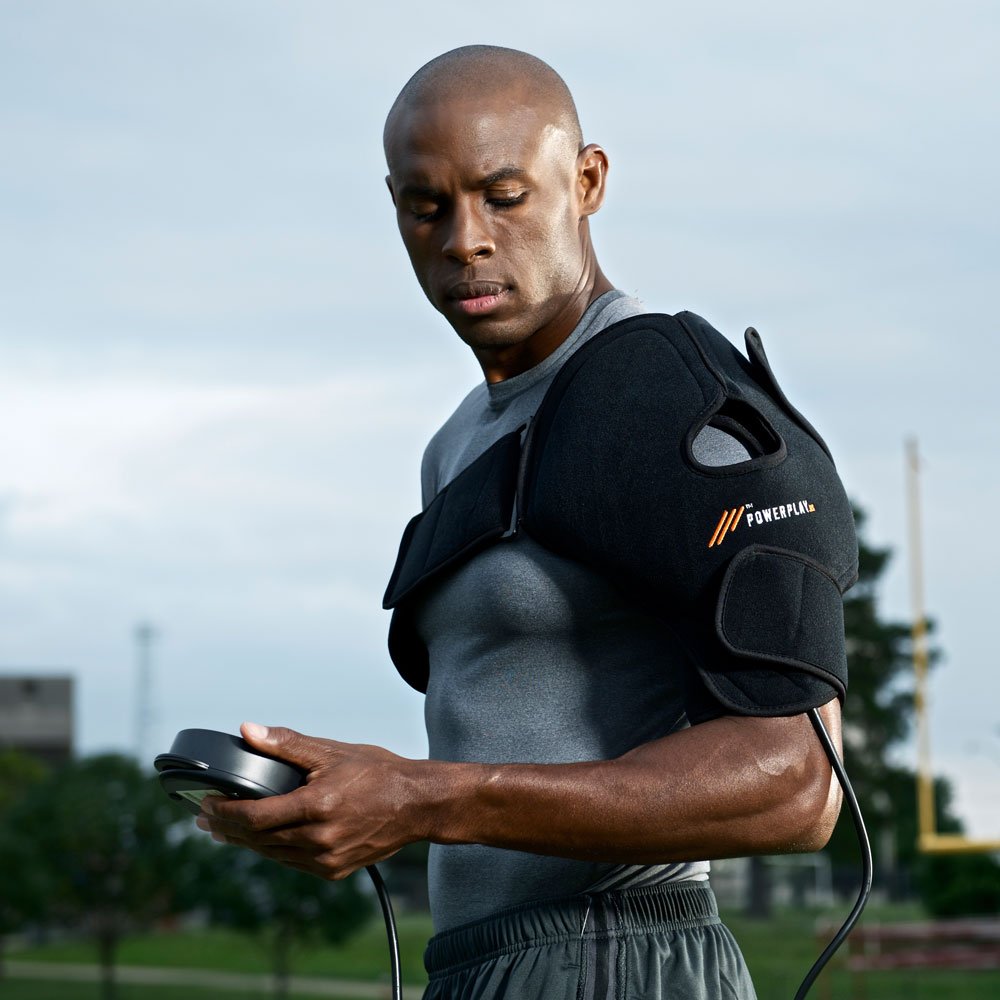Cold compression therapy combines cold and compression to help treat acute injuries and reduce post-operative pain. While cold therapy and compression therapy have long been staples in treating pain, inflammation, and fluid accumulation, new devices offer the combined benefits of both therapies.
For physical therapists, cold compression solutions offer the wound healing benefits of cold and compression therapies, various options based on the area being treated, and convenience. Greater use of cold compression therapy after surgery also reduces dependency on pain medication.
1. Wound healing benefits
- Helps reduce tissue damage: Applying cold therapy to an area decreases the metabolic rate locally and lowers the amount of tissue damage resulting from insufficient blood supply.
- Reduces inflammation: Cold therapy constricts blood vessels (vasoconstriction) under the skin, which reduces blood flow to the injured area and minimizes inflammation. This makes it easier for the skin to receive much-needed oxygen and begin healing.
- Lowers swelling and edema: The vasoconstriction from the cold reduces inflammation and fluid accumulation. Compression further prevents the accumulation of fluid and the resultant swelling.
- Offers fast pain relief: The cold numbs the site of injury, which dulls nerve activity and provides rapid pain relief.
- Stability and risk mitigation: Compression wraps or devices help stabilize a joint. This stability promotes healing by limiting joint movement and allowing the body to heal.
2. Reduce dependency on pain meds after surgery
60% of patients feel that their biggest concern going into surgery is postoperative pain. Pain management is an important part of recovery after surgery. Studies show that physical therapy after surgery can help patients recover faster.
Physical therapists can help patients reduce swelling and inflammation through cold compression therapy after surgery. This becomes more important as more surgical procedures are offered as outpatient procedures with same-day discharges. This shift places a more significant burden on physical therapists to facilitate recovery after procedures like routine orthopedic surgeries.
A significant benefit of this is that after the opioid crisis in the US, healthcare facilities are actively looking to lower dependence on opioid pain medication after surgery. When applicable, cold compression therapy is a safe and non-invasive way to offer multimodal pain management after surgery.
3. Convenience
Cold compression therapy gives physiotherapists freedom from dealing with ice, ice machines, and water—all of which can cause a lot of mess. The ready-to-use packs are easy to transport and convenient to use in clinics, various homes, offices, clinics, and on the sidelines of sporting events.
This portability is a huge benefit when the demand for physical therapists is on the rise. Sedentary lifestyles due to office jobs, an aging population, and value-based care models place a greater burden on physical therapists. The US Bureau of Labor Statistics estimates a 16.9% employment growth for physical therapists by 2031, with about 40,400 jobs. This need is due to the rising demand for physical therapy as an effective pain and wound management modality.
Easy-to-use solutions like cold compression therapy devices can help physical therapists juggle multiple appointments and at-home visitations in a day and work for different injury sites. The versatility offered by cold compression therapy allows physical therapists to manage sprains, bruises, swelling, inflammation, and post-surgical recovery. They are cost-effective and reusable, making them extremely attractive for physical therapists on the go.
Why Powerplay cold compression therapy for physical therapists?
Powerplay cold compression devices:
- Offer cold therapy with intermittent and sequential compression — more therapy options to address different types of pain and swelling
- Gel packs are easy to use and portable
- Packs are lightweight—they weigh less than 1 lb
- Offer the ability to treat 3 patients or athletes at a time
- Provide 5 pressure settings— 30 mmHg to 70 mm Hg
- Competitive pricing, and much more.
Learn more about what Powerplay cold compression therapy packs can do for your practice.

